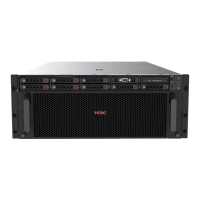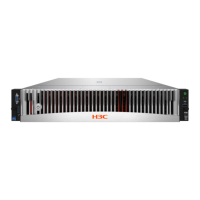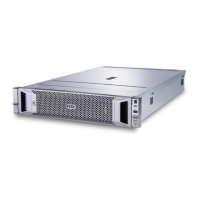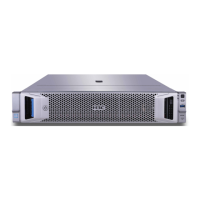2
RAID levels
The supported RAID levels vary by storage controller model. For more information about the
supported RAID levels of each storage controller, access
http://www.h3c.com/en/home/qr/default.htm?id=66
.
Table 1 shows the minimum number of drives required by each RAID level and the maximum
number of failed drives supported by each RAID level. For more information about RAID levels, see
"Appendix B RAID arrays and fault tolerance."
Table 1 RAID levels and the numbers of drives for each RAID level
RAID 0 1 0
RAID 1 2 1
RAID 1
ADM
3 2
RAID 5 3 1
RAID 6 4 2
RAID 10 4 n, where n is the number of RAID 1 arrays in the RAID 10 array.
RAID 10
ADM
6
2n, where n is the number of RAID 1 ADMs in the RAID 10
ADMs.
RAID 50 6 n, where n is the number of RAID 5 arrays in the RAID 50 array.
RAID 60 8 2n, where n is the number of RAID 6 arrays in the RAID 60 array.
Hot spare drives
You can configure hot spare drives to improve data security. A hot spare drive is a standby drive that
does not store any data. When one or multiple drives in a redundant RAID fail, spare drives
automatically replace the failed drives and rebuild the data of the failed drives.
The storage controller supports the following types of hot spare drives. For more information about
hot spare drive types, see "Storage controller features."
Dedicated spare drive.
Auto replace spare drive.
Drive states
Before using a RAID controller to configure RAID and hot spare drives, you must first initialize
drives in a raw state. Initializing a drive erases all data on the drive and creates a small partition to
store RAID information. Deinitializing a drive removes all data (including metadata) and the
reserved space, and removes system partitions, effectively returning the drive to raw state.
Drive states include the following:
Raw (pass through)—Represents a new or uninitialized drive. The operating system disk
management interface can recognize and configure partitions on this disk, making it suitable
for OS installation.
Ready—Indicates that the physical drive has been initialized and can be used to create RAID
arrays or set up hot spare drives. The disk management interface of the operating system
cannot recognize this state, and the drive cannot be used for system installation.
Optimal—Indicates that the physical drive is a member of a RAID array.
Setting the RAID controller's working mode to HBA automatically changes the drive state to Raw,
and setting the RAID controller's working mode to RAID/Mixed changes the drive state to Ready.

